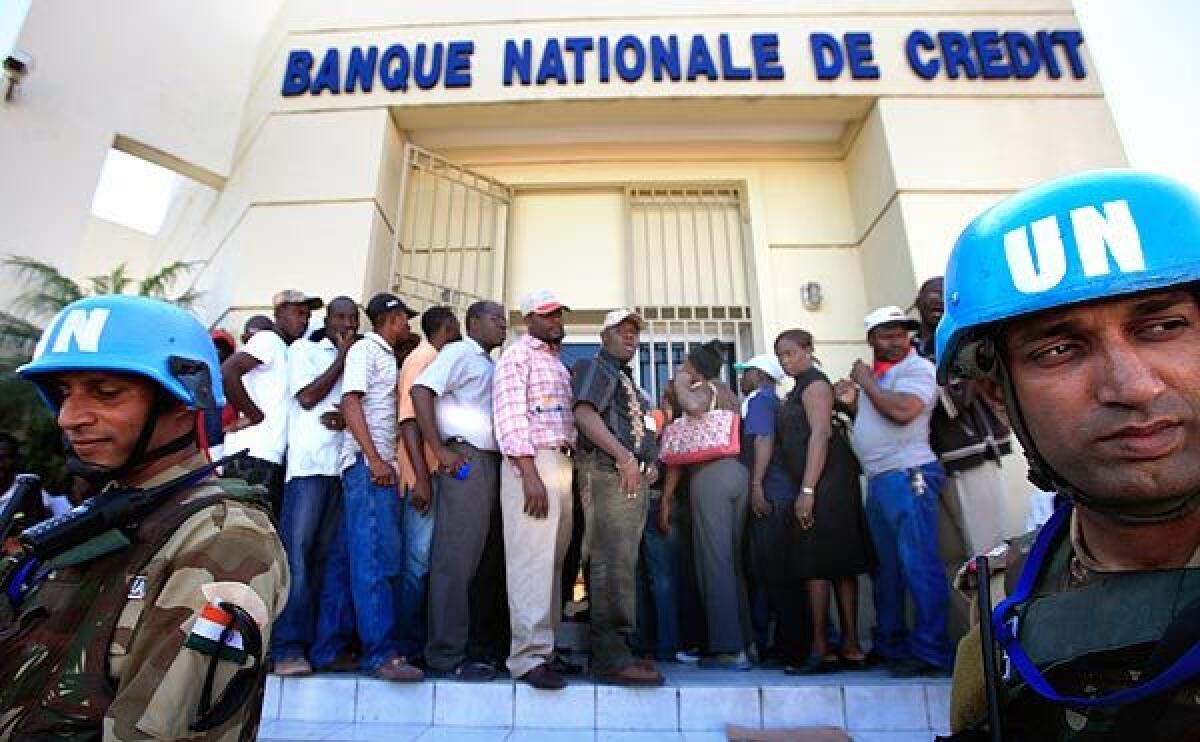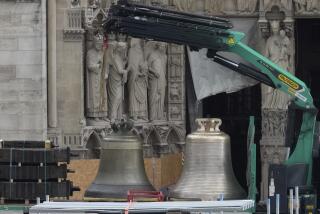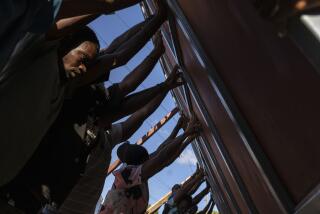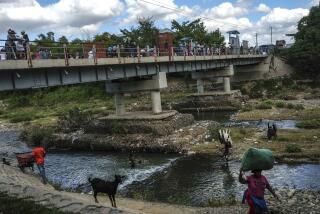Banks reopen in Haiti’s capital

Reporting from Port-Au-Prince, Haiti — The earthquake destroyed just about everything Georges Marceau owned, even his shoes.
For 10 days, the 38-year-old engineer couldn’t even withdraw money to buy food: All of the banks in Haiti’s capital, Port-au-Prince, had been closed since the Jan. 12 quake.
So on Saturday, the day the banks reopened, Marceau was up early and in line at a Sogebank branch shortly after 5 a.m. A tall man with a dignified bearing and a neatly trimmed beard, he was dressed in slacks, a sports jacket and awkward-looking clogs.
“I want some money in my pocket,” he said. “I want money to eat.”
Many bank branches collapsed in the earthquake and won’t be reopening soon, if ever. But banks that had doors to open did so Saturday, attracting long lines of anxious and sometimes desperate people in a city where ATMs haven’t been working since the earthquake.
The opening was a significant step forward for Haiti, where commerce came to a crashing halt when the magnitude 7.0 earthquake struck, killing tens of thousands of people.
Haitian officials have counted on the reopening of banks to give businesses a boost and free up money to begin the long task of rebuilding the country.
The effects were not immediately felt.
“We put this stuff out, we don’t sell anything,” complained Mimos Charles, 32, who was selling okra alongside other vendors on a busy street in the capital. “We sit on the street for nothing.”
“It’s still the same,” said the woman next to her, Darlene Amboise, a 19-year-old with a look of steely resignation. She lost her daughters, 1- and 2-year-olds, when their house collapsed.
Up the street at the Lola Market, a small well-stocked grocery, manager Vladimir Thermitus said business was down by 50% and he hadn’t seen a surge since the bank opening. But he was hopeful.
“With the banks open, business is going to be better,” he said. “It’s natural.”
But a return to normal? That seemed a long way off.
Also Saturday, hundreds of Haitian priests in long white cloaks mourned the loss of Archbishop Joseph Serge Miot, the leading Roman Catholic prelate in the country, in a funeral Mass at the ruins of the Notre Dame Cathedral.
They were joined by members of the U.S. Conference of Bishops, led by Archbishop Timothy Nolan of New York.
Two white coffins rested under a tarp, one for Miot and the second for Charles Benoit, the general vicar of the church who had languished for several days in the rubble but could not be rescued.
At least two bodies were still visible at the rear of the church, pinned by debris.
“This is very hard to explain,” said Father Giroux Mirine, a Canadian priest who has lived and worked in Haiti for 19 years. “We cannot blame God. We have to confront nature.”
They sang hymns, rang bells and shared communion, passing the Eucharist wafers in a bronze chalice and speaking of resurrection and sacrifice.
“The people here are very Catholic, and even those who are not Catholic are very strong in their Christian faith,” said Father Milton Rivera, an official with the archdiocese of San Juan, Puerto Rico, who was among the foreigners who came to support the Haitians. “We want to embrace them and show our support, physically and spiritually, especially for their suffering.”
mitchell.landsberg@ latimes.com
More to Read
Sign up for Essential California
The most important California stories and recommendations in your inbox every morning.
You may occasionally receive promotional content from the Los Angeles Times.











